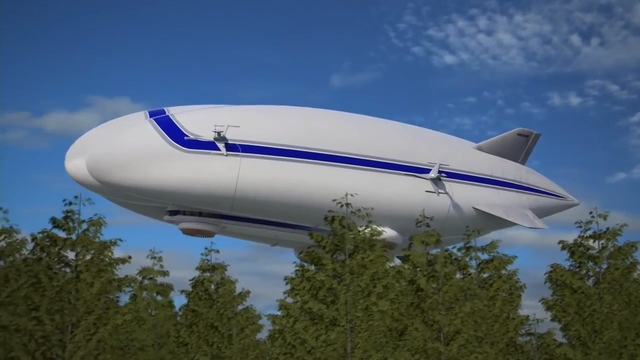Hybrid Airship: Big Impact, Small Environmental Footprint
Lockheed Martin | Innovation Stories
More than two-thirds of the world’s land area and more than half of the world’s population have no direct access to paved roads. How then do you access remote sites safely, affordably and with a small environmental footprint?
Planes are an option, but you need runways. Helicopters are an option, but cannot carry large freight, cargo or many passengers. Ships are an option, but you need major waterways.
Enter the Hybrid Airship. While deceivingly simple, the Hybrid Airship deploys a sophisticated flight control system and a proprietary air cushion landing system (ACLS), enabling safety, affordability and flexibility in accessing remote locations.
In fact, with the ability to carry up to 20 tons of cargo and 19 passengers, the possibilities seem endless for the Hybrid Airship: cargo delivery, humanitarian aid, mobile hospitals, eco-tourism and more—all while driving major benefits to environmental and economic sustainability.
Rain or snow, hot or cold, calm or blustery, the Hybrid Airship offers day-to-day flying capability to operating sites worldwide.
TECHNOLOGY DRIVES SUSTAINABILITY
Emissions from commercial transport today account for approximately 1.5 percent of the global carbon dioxide footprint, and are expected to increase as air traffic and trade grows.
This is what makes the Hybrid Airship’s tiny environmental footprint so valuable.
“Developing resource sites without most of the environmental footprint impacts is a complete game changer for a huge number of resource projects,” said Jonathan Molyneux, sustainability consultant at Environmental Resources Management. “If you can take 80 percent of those footprint impacts out of the equation in the lifetime of the asset, and even more out of the construction phase, you could not only accelerate the lead-time for construction, you transform the economics and significantly reduce environmental concerns.”
When it comes to operating in remote locations, several technologies give the Hybrid Airship unmatched capabilities.
Let’s break it down.
The Hybrid Airship is non-rigid, with no internal structure providing its shape, and it is heavier than air. Meaning, eighty percent of its lift is generated by helium (and the efficiencies that come with helium), and 20 percent is from the aerodynamic design of the envelope.
“Basically, the envelope is one giant wing creating lift,” said Bob Boyd, Hybrid Airship program manager at Lockheed Martin. “And, the envelope is made from strong, lightweight material that can withstand internal pressure loads and external wind forces while keeping the structural weight low, a key component for cost efficiency.”
Perhaps one of the most critical of the Hybrid Airship technologies is the ACLS—three hoverpads that create a cushion of air, allowing it to float along the ground nearly friction free.
“With the ACLS, the Hybrid Airship requires little to no fixed ground infrastructure to take off and land, which means you can land virtually anywhere –dirt, grass, ice, snow and even water,” said Boyd. “Once you’ve landed, the ACLS essentially acts like a suction cup, gripping the ground, providing additional stability for operations.”
Then there’s the power. Flying with a 4-liter piston engine (essentially a car engine), the Hybrid Airship uses one-tenth the power of a fixed-wing aircraft, enabling fuel economy, and the engine’s thrust can be vectored up or down to augment lift. Plus, its propellers spin at relatively low revolutions per minute, making it a quiet cargo delivery aircraft.
“Believe it or not, remote areas are also concerned with noise,” said Boyd. “Imagine you’re waiting for a visitor who is driving a mid-size 4-cylinder sedan. At a half mile away, how loud is that car? Can you even hear it? Barely, if at all. That’s what the Hybrid Airship does for noise.”
LOOKING TO THE FUTURE
In addition to the sustainability benefits, Boyd believes that Hybrid Airships have humanitarian aid implications as well.
“With the Hybrid Airship, humanitarian aid can reach zones nearly inaccessible by limited infrastructure, and they make for easy loading or unloading of patients –those who can walk, in wheel chairs or stretchers,” said Boyd. “In the future, even a mobile hospital could become a reality.”
The possibilities for the Hybrid Airship are as plentiful as its benefits. And, the program is well on its way to becoming operational as early as 2019, having received Federal Aviation Administration approval on its unique certification plan.
“Clearly, this is not your grandfather’s airship,” said Boyd.





